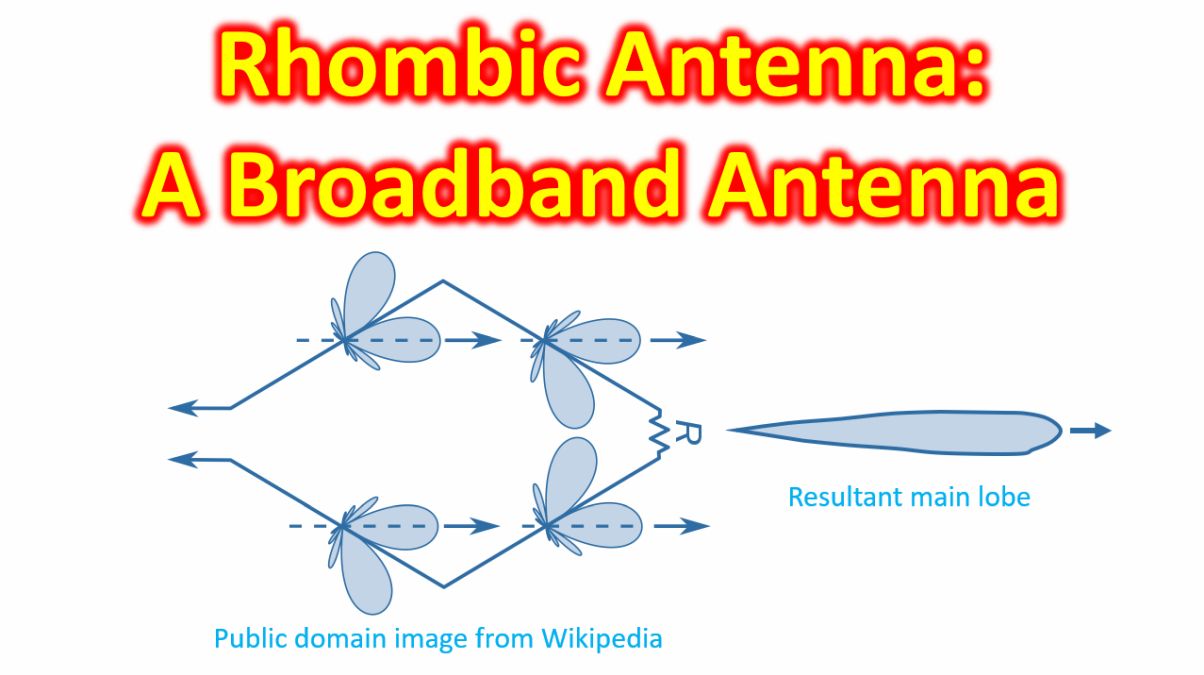Rhombic Antenna – A Broadband Antenna
Rhombic Antenna – A Broadband Antenna
Rhombic antenna is a broadband directional antenna which was invented by Edmond Bruce and Harald Friis in 1931 and was considered king in that decade and the next. It is a broadband antenna which can operate at a wide range of frequencies. As the name implies, it has the shape of a rhombus or a parellelogram with all four sides equal and is built of wires, typically mounted in the horizontal plane. Horizontally mounted rhombic antenna has horizontal polarization of emitted electromagnetic waves, at a low angle of elevation. This is useful in skywave propagation to work DX stations in amateur radio. Rhombic antenna is fed from one of the acute angles of the rhombic shape and the other end can be terminated with a resistor. Terminating with a resistor gives directionality for the antenna in the direction taking off from the resistor end. If it is not terminated with a resistor, rhombic antenna will be function as a bidirectional antenna, with radiation more from both acute angles, though not exactly symmetrical.

Rhombic antenna has to be fed either by a balanced transmission line or with a balun and coaxial cable. As it is mounted horizontally, it needs four supports at four corners and needs a lot of space as well. Each limb of the rhombus has to be one to two wavelengths of the lowest operating frequency. For high gain and directivity, limbs of 8 to 12 wavelengths are needed. Naturally this would limit the usage to only remote regions with a lot land available in case of HF operations, in the current scenario. Resistor used for termination should have adequate power rating in case of transmitting antennas and has a value of 600 to 800 Ohms. Power loss in the resistor of up to 50% means a lower transmitting efficiency of the rhombic antenna.